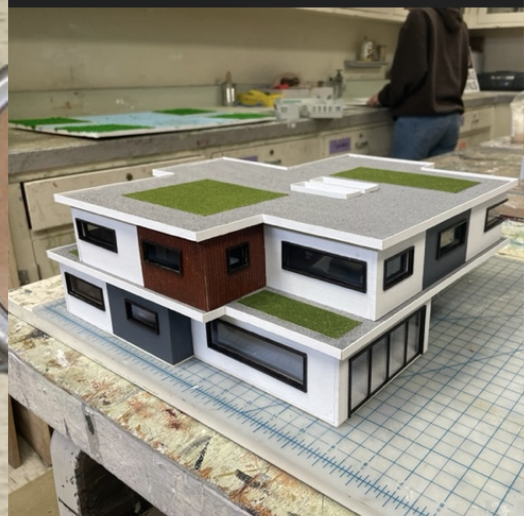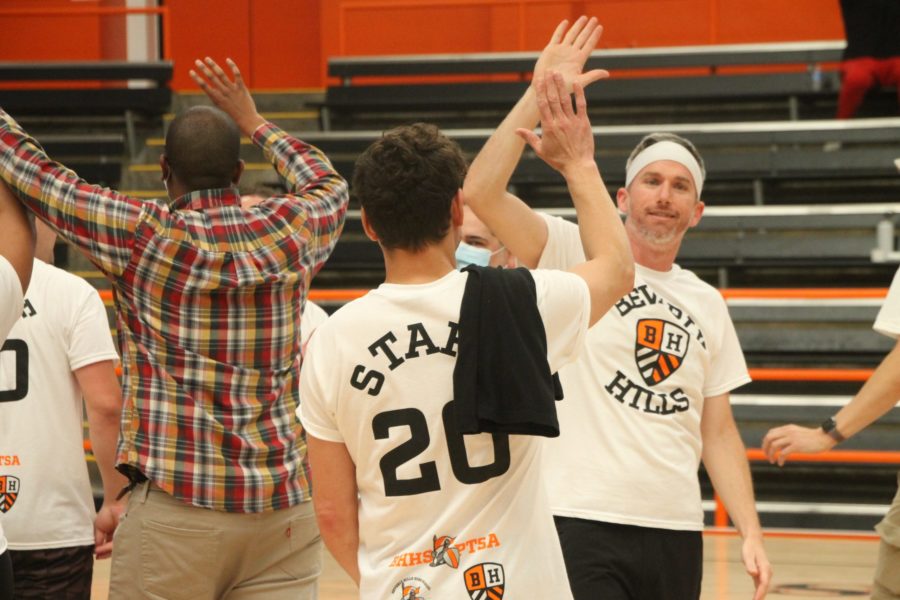Sophia Goldberg, staff writer
Veronica Pahomova, staff writer
Sydney Tran, staff writer
The discovery of arsenic in the soil of the lacrosse field has left many students, parents and faculty members concerned for their health. According to administration, however, there is no immediate threat posed by the naturally-occurring chemical substance.
This finding has led to the field’s immediate closure and covering with plastic. The lacrosse field was officially closed in August when arsenic, a toxic element, was discovered in the soil during drilling needed for the planned modernization.
A poll of Beverly students found that 69 percent of the student body is concerned about potential health risks as a result of the material. However, Principal David Jackson assures students that there is no danger to their health, regardless of their activity.
“We found arsenic about 5 and half, 6 feet down. I guarantee you, you take a shovel and you dig 5 and a half, 6 feet down, and you eat the dirt for days, you’re probably going to get sick. There’s nothing up on top,” Jackson said.
Despite the faculty’s reassurance that the soil is safe unless dug up and consumed, some students, including lacrosse player Zach Antin, are concerned about their health in reaction to their long-term exposure to practice on the field.
“Sure I [have health concerns], but I can’t do anything about it. I talked to my coach [Kyle] Kobe and he said that the arsenic was found 6 feet below the surface, so the topsoil was fine. I guess if I could go back in time, sure I would change [having practiced football and lacrosse on the upper field] but what’s done is done…It isn’t great now, but what can we do?” Antin said.
This newfound complication has led to concern of potential delay in the planned construction of the older buildings and of the absence of a field on which many sports teams, including lacrosse, football and soccer practice.
Superintendent Steve Kessler believes that the arsenic in the lacrosse field is only a minor issue in regard to the modernization of the school. According to Kessler, the removal of the soil should not affect the timeline of the construction to begin in January.
“Were we happy to discover the arsenic? Of course not, it threw a monkey wrench into everything. At least we found it and know exactly where it is. We’ve already submitted our remediation plan to the state for their review. This process, we’ve been told, will only take one to two days. It’s them coming in and basically removing the soil down far enough for the happiness of the Department of Toxic Substance Control (DTSC). Then, we cart all that dirt out to put in a special place for arsenic, and then we import clean soil, and we put it in,” Kessler said.
In order to continue with the construction, the field’s hazardous soil must be disposed of following strict protocol. Kessler was told that the entire project of cleaning and replacing the soil will be completed by early November.
“We have to follow the Department of Toxic Substance Control’s protocol. We’re totally under their supervision, their protocols, and, frankly, for us to move ahead with our modernization program, we have to cross every ‘t’ and dot every ‘i’ in regards to that protocol. What we have been told by the facility director is that if everything goes according to plan, we will finally finish this up sometime in early November. So, if we follow the protocols correctly and everything goes according to plan, we could then be going into our temporary facilities in January,” Kessler said.
The restriction of the lacrosse field has been, according to lacrosse players, a hinderance to the team.
“I’m not in conditioning right now, but I’ve gone, and it’s on the softball field which is annoying because there are no goals. When practice starts, we may have to go to Roxbury,” Antin said.
Lacrosse coach Kyle Kobe states that his teams currently do not have a well-designated area to run their conditioning. His players have been taking advantage of the unoccupied softball field during seventh period.
“It’s not ideal. If you’ve ever been to the softball diamond, there’s not a whole lot of grass in the outfield, so we’re really just kicking around a lot of dirt, which is not very realistic of a true lacrosse field. We’re just trying to make the best of the situation,” Kobe said.
Kobe has faith in the new athletic director, Wanda Szeremeta, to find spaces for the teams to practice.
“Finding areas for boys and girls lacrosse, boys and girls soccer, the football team, track and field, the baseball team and the softball team to all practice is going to be very difficult, but that’s why we have an athletic director now,” Kobe said.
Overall, though the uncovered chemical has implemented its fa ir share of problems, Kessler and his colleagues are taking action in order to fix the situation as quickly and efficiently as possible. Aside from the temporarily uncertain practicing locations and a few other concerns, the staff ensures that everything is under control.
ir share of problems, Kessler and his colleagues are taking action in order to fix the situation as quickly and efficiently as possible. Aside from the temporarily uncertain practicing locations and a few other concerns, the staff ensures that everything is under control.
“I’ve always felt that Beverly Hills is a very special place. I think we are an elite school district,” Kessler said. “I really believe that Beverly High, as well as the other schools, will become jewels and a model for other school districts to follow in the future.”
Categories:
Arsenic in lacrosse field proves harmless
September 4, 2015
0
Donate to Highlights
$125
$1000
Contributed
Our Goal
Your donation will support the student journalists of Beverly Hills High School. Your contribution will allow us to purchase equipment and cover our annual website hosting costs.
More to Discover





























